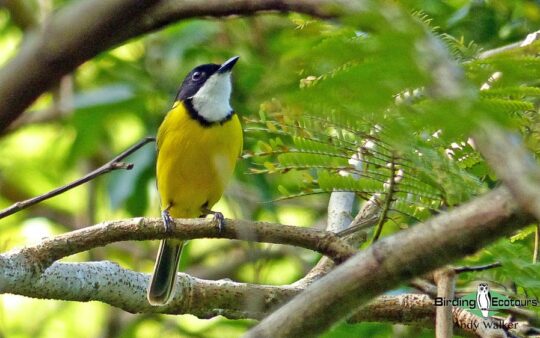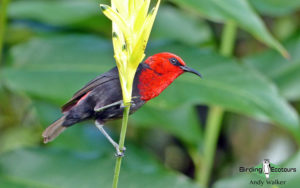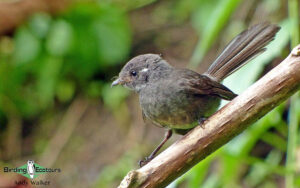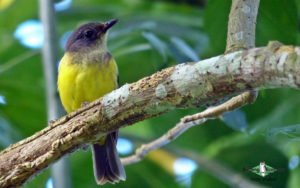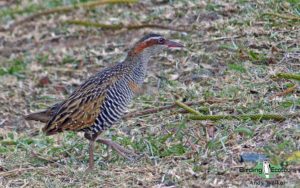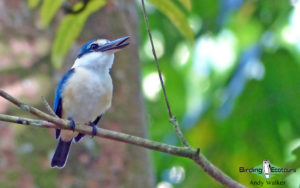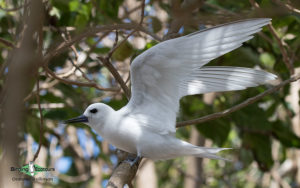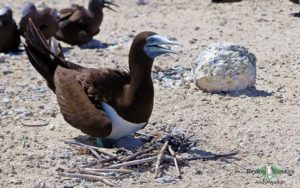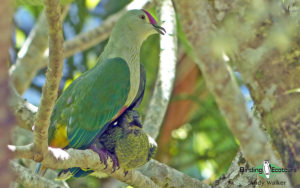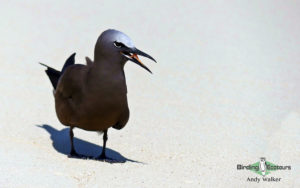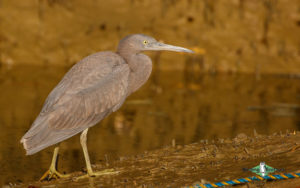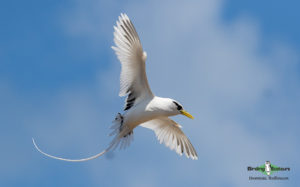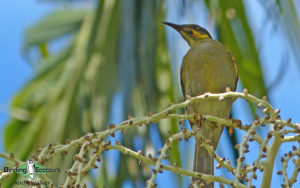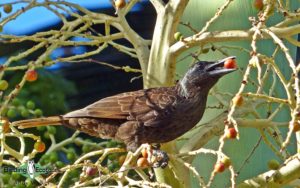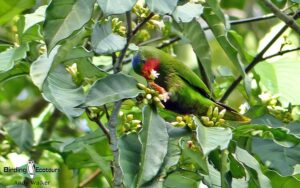Samoa Birding Tours
Our Samoa birding tours form part of our Fiji and Samoa Pacific islands birding tours and during our time on Samoa we concentrate our efforts on the endemics of the large island of Upolu. The Independent State of Samoa (“Samoa” hereafter) was, until 1997, known as Western Samoa. It is a Polynesian island country consisting of two main islands (Savai’i and Upolu) as well as several smaller inhabited and uninhabited islands. Located in the South Pacific, Samoa is about halfway between the US state of Hawaii, 2,485 miles (4,000 kilometers) to the north and New Zealand, 1,555 miles (2,500 kilometers) to the south. In addition, Australia is located 2,175 miles (3,500 kilometers) to the west of Samoa, with the Fiji archipelago approximately 320 miles (800 kilometers) in the same direction. To the east of Samoa, after approximately 5,600 miles (9,000 kilometers) the continent of South America and the country of Peru are reached.
The Lapita people discovered and settled on the Samoan islands (which includes American Samoa – an unincorporated territory of the United States) about 3,500 years ago, where they developed a Samoan language and cultural identity. Jacob Roggeveen, a Dutchman, was the first European to sight the Samoan islands in 1722, followed by the French admiral and explorer Louis-Antoine de Bougainville in 1768, who named the Samoan islands the Navigator Islands (due to the seafaring skills of the native people). Bougainville Island of Papua New Guinea, as well as the Bougainvillea flower are also named after this famous Frenchman. Samoa was part of the German Empire from 1899 until 1915, Samoa was then a joint British and New Zealand colonial administration, with the country gaining independence in 1962.
Read More About Samoa
Samoa lies just south of the equator and therefore has an equatorial climate with year-round hot temperatures. The two large islands (Upolu and Savai’i) account for 99% of the total Samoan land area, which is 1,097 square miles (2,842 square kilometers). Apia (which we visit on our Samoa birding tours) is the largest city and is also the capital and is found on the island of Upolu. As with many other islands in the South Pacific Ocean, Samoa is of volcanic origin, though only Savai’i, the largest and westernmost of the Samoan islands remains active today. Mount Silisili at 6,096 feet (1,858 meters) is the highest peak in Samoa.
The Samoan tropical moist forest ecoregion which occurs across the islands includes lowland rainforest (which is the most extensive habitat, though this has reduced in area since human settlement), montane forest, and cloud forest. Additionally, areas of montane, pandanus, littoral, and summit scrub exist, along with small areas of montane swamp forest. Around 30% of Samoa’s biodiversity is endemic.
Following International Ornithological Congress (IOC) taxonomy, v14.1 (July 2024), the bird list of Samoa stands at 101 bird species, with ten endemics, though one is likely extinct and another is very close to extinction, these include: Flat-billed Kingfisher, Mao (a honeyeater), Samoan Triller, Samoan Whistler, Samoan Flycatcher, Samoan Fantail, Samoan White-eye, and Samoan Starling. Tooth-billed Pigeon, considered Critically Endangered by BirdLife International, is extremely rare and perilously close to extinction, and the Critically Endangered (BirdLife International) endemic Samoan Woodhen (Moorhen) is now considered extinct, having not been seen since 1873. In the wake of recent IOC updates (July 2024), Samoa’s list of endemic species is set to increase. With the split of Island Thrush into more than 15 species, the Samoan Island Thrush is likely to become a new country endemic.
Other interesting birds occurring in Samoa include Pacific Long-tailed Cuckoo, Shy Ground Dove, Many-colored Fruit Dove, Crimson-crowned Fruit Dove, Blue-crowned Lorikeet, Cardinal Myzomela, Polynesian Wattled Honeyeater, Polynesian Triller, Polynesian Starling, Royal Parrotfinch, Red-headed Parrotfinch, and Pacific Robin. The island and its surrounding waters are also great for some interesting terns and other seabirds like Black Noddy, White Tern, Spectacled Tern, White-tailed Tropicbird, Great Frigatebird, and Masked Booby. Seeing Buff-banded Rails and Pacific Golden Plovers walking around in peoples’ gardens is an amazing sight, as too is seeing the nesting White Terns while birding in the forest!
One of Samoa’s most famous residents was Scottish author Robert Louis Stevenson, best known for his novels Treasure Island (1881), Kidnapped (1886), Strange Case of Dr Jekyll and Mr Hyde (1886), and The Master of Ballantrae (1889). He resided on the island from 1889 until his death, in 1895, aged 44. The Robert Louis Stevenson Museum at Vailima near Apia is an interesting place to explore, and is also a great birding location, we visit here on our Samoa birding tours to connect with a number of the endemic species and regional specials.
The pace of life in Samoa is extremely slow and relaxed, the accommodations are luxurious and extremely comfortable with good food, and the beaches, as you would expect from this part of the world, are idyllic. It is a great place to spend some time relaxing and birding.
Download Samoa Itineraries
Fiji and Samoa: Pacific Birding Adventure August 2026/2027
